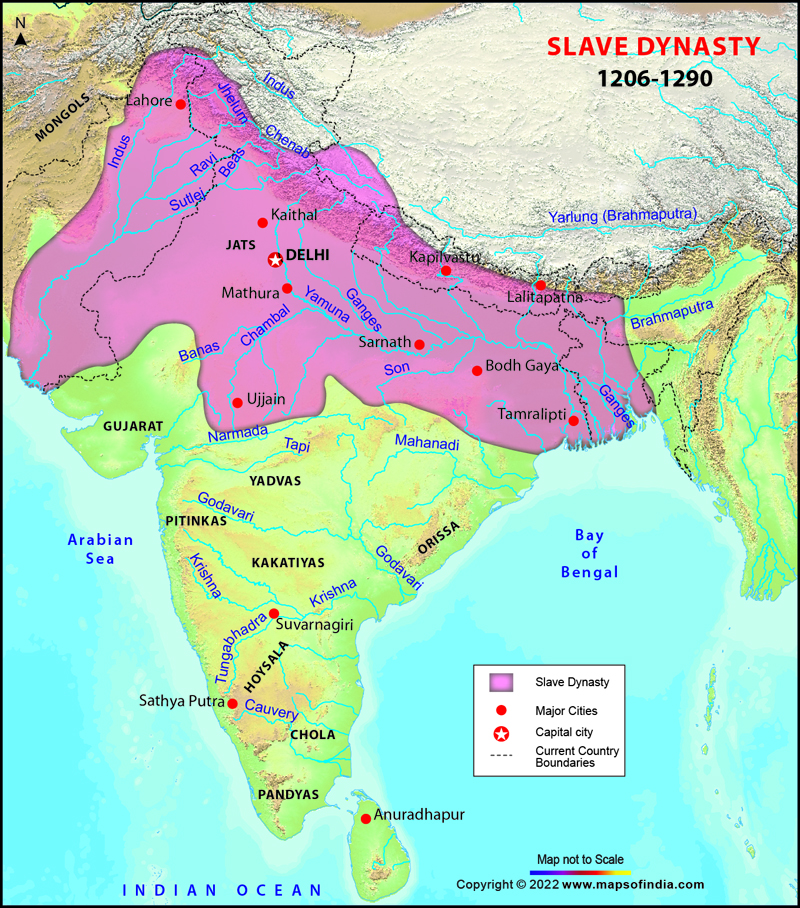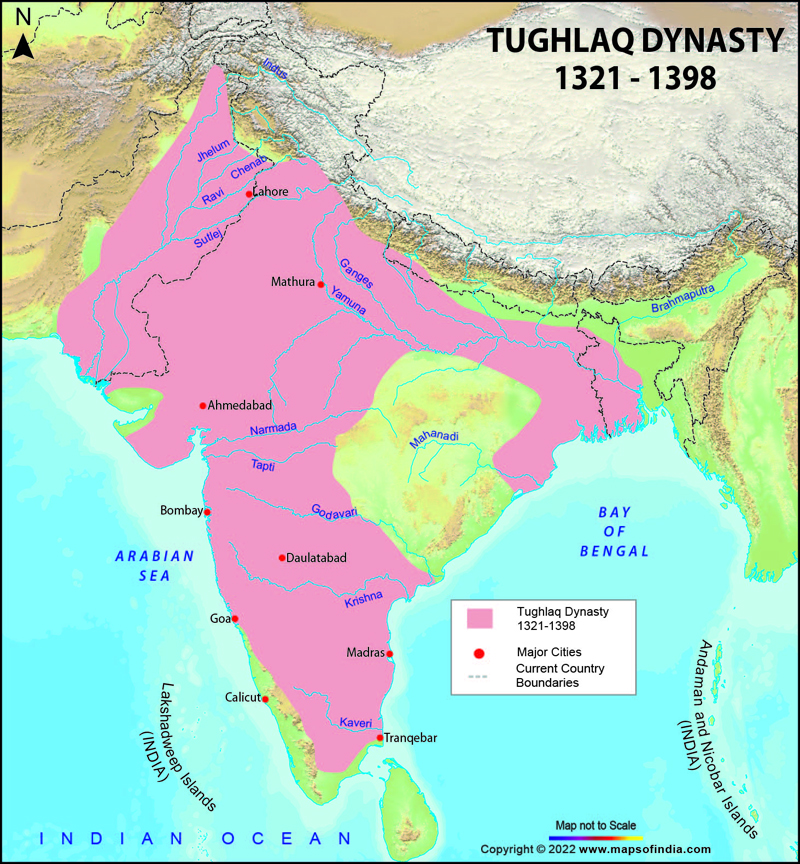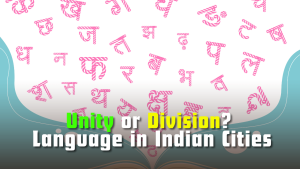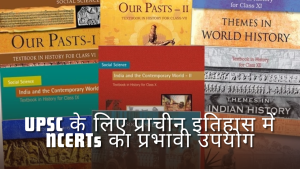Delhi Sultanate: Early Medieval Transformations
Explore the Delhi Sultanate’s dynasties, rulers, reforms, economy, culture, and architecture—key for UPSC Prelims and Mains history preparation.
Introduction: Delhi Sultanate
The Delhi Sultanate (1206 –1526 CE) was a transition period in Indian history, marking the consolidation of Muslim rule in North India and laying the foundations for later Mughal administration. Its significance in the UPSC preparation comes from its political, administrative, and cultural contributions, which are frequently tested in Prelims exam (GS Paper 1) and Mains exam (GS Paper 1 & History Optional).
The Slave Dynasty (Mamluk Dynasty)
The Slave dynasty, also known as the Mameluk dynasty, derives its name from the Arabic word ‘Mameluk’. It referred to elite Turkish slaves trained for military roles, distinct from domestic or artisan slaves. During this era, three dynasties emerged:
- Qutbi dynasty (1206–1211 CE) founded by Qutbuddin Aibak,
- First Ilbari dynasty (1211–1266 CE) established by Iltutmish,
- Second Ilbari dynasty (1266–1290 CE) led by Balban.

Qutbuddin Aibak (1206–1210 CE)
- Originally a slave, he gained Muhammad Ghori’s trust as a military commander and later established his own rule after Ghori’s demise in 1206.
- Ruled from Lahore and earned the title Lakh Baksh (“giver of lakhs”) for his generosity.
- Patronised scholar Hasan Nizami and initiated the construction of the Qutb Minar.
- Died in a chaugan (polo) accident. His son, Aram Baksh, briefly succeeded him before being overthrown by Iltutmish.
Iltutmish (1211–1236 CE)
- A slave of Aibak from the Ilbari tribe, he married Aibak’s daughter and seized power.
- Shifted the capital from Lahore to Delhi.
- Refused asylum to Jalaluddin Mangabarni, avoiding conflict with Chengiz Khan and the Mongols.
- Expanded the empire by annexing Bengal, Bihar, Sind, and Multan and crushing Rajput revolts.
- First sultan to receive mansur (official recognition) from the caliph, legitimising his rule.
- He was responsible for issuing the silver tanka (an early rupee) and founding the Chalisa (The Forty), an influential bloc of nobles
- Nominated his daughter Raziya as his successor.
Raziya Sultan (1236–1240)
- The first and only female ruler of the Delhi Sultanate.
- Faced opposition for appointing an Abyssinian slave, Yakuth, to a high post and rejecting purdah.
- Overthrown by nobles, she later married Altunia, the governor of Bhatinda, but was killed soon after.
- Her downfall strengthened the Chalisa nobles’ dominance.
Ghiyasuddin Balban (1246–1287)
-
- Initially served as regent (Naib) before becoming Sultan.
- Promoted absolute monarchy, calling himself the “Shadow of God.”
- Key reforms:
-
-
- Strict court rituals (prostration, foot-kissing).
- Introduced Nauroz, a Persian festival, to showcase royal grandeur.
- Established a spy network to monitor nobles.
- Crushed the Chalisa, punished corrupt officials, and restored law and order.
- Military achievements:
-
- Created Diwan-i-Arz (military department).
-
- Subdued Mewati outlaws and suppressed the Bengal rebellion (putting down insurgent Tughril Khan)
- After his death, his weak grandson Kaiqubad was overthrown by Jalaluddin Khalji in 1290, ending the Slave Dynasty.
The Khalji Dynasty (1290–1320 CE)
From 1290 to 1320 CE, the Khalji Dynasty reached the zenith of Muslim imperial dominance in India. Founded by Jalaluddin Khalji, it is best known for the ambitious reign of Alauddin Khalji, who introduced sweeping administrative, military, and economic reforms.

Jalaluddin Khalji (1290–1296 CE)
- Came to power at 70, known for his generosity and leniency.
- After crushing Malik Chhajju’s revolt, he appointed his ambitious son-in-law, Alauddin Khalji, as governor of Kara. However, in 1296, Alauddin betrayed and assassinated him to claim the throne
Alauddin Khalji (1296–1316)—The Architect of Power
1. Consolidation of Power
- Initially rewarded nobles but later crushed dissent with strict policies.
- Four key ordinances to control nobles:
- Confiscation of property to prevent rebellion.
- Reorganised the spy system for surveillance.
- Banned liquor and drugs in court.
- Social gatherings required royal permission.
2. Military Reforms
- Maintained a huge standing army (475,000 cavalrymen).
- Introduced:
- Dagh (branding horses to prevent fraud).
- Huliya (detailed soldier records).
- Regular inspections to ensure efficiency.
3. Market Reforms (Price Control System)
-
- Paid soldiers in cash, necessitating price regulation.
- Established four markets in Delhi:
- Grain
- Cloth, sugar, fruits, butter, oil
- Horses, slaves, cattle
- Miscellaneous goods
- Officials appointed:
-
- Shahna-i-Mandi (market controller).
- Naib-i-Riyasat (head of the trade department).
- Munhiyans (secret agents to report violations).
- Strict price controls with harsh punishments for cheating.
4. Land Revenue Reforms
- First sultan to measure land for taxation.
- Collected revenue in cash (not kind).
- Taxed even powerful landlords, reducing their influence.
- Laid the foundation for later reforms by Sher Shah Suri and Akbar.
Military Campaigns
- Defense Against Mongol Invasions
- Faced six Mongol invasions but repelled all.
- Fortified the NW frontier.
- Appointed Ghazi Malik (later Ghiyasuddin Tughlaq) as Warden of the Marches.
- Expansion in India
- Gujarat (1299)—Conquered; queen captured; Malik Kafur (future general) brought to Delhi.
- Ranthambore (1301)—Rajputs performed jauhar (mass self-immolation).
- Chittor (1303)—Famous siege; Rani Padmini’s jauhar (later romanticised in Padmavat).
- Deccan & South India (Led by Malik Kafur)
- Devagiri (1307-08) – Ramachandra Deva (Yadava) submitted.
- Warangal (1309)—Prataparudra (Kakatiya) defeated.
- Dwarasamudra (1310)—Vira Ballala III (Hoysala) surrendered.
- Madurai (1311)—Vira Pandya (Pandya) fled; massive loot brought back.
Cultural Contributions
- Patronised Amir Khusrau (poet-musician) and Amir Hasan (Sufi poet).
- Built:
- Alai Darwaza (Qutub Complex gateway).
- Siri Fort (Delhi’s second city).
Decline & End of the Dynasty
- After Alauddin’s death (1316), weak successors ruled:
- Mubarak Shah (son, assassinated).
- Khusrau Shah (usurper, unpopular).
- In 1320, Ghazi Malik (governor of Dipalpur) killed Khusrau Shah and founded the Tughlaq Dynasty as Ghiyasuddin Tughlaq.
The Tughlaq Dynasty (1320-1414 CE)

Ghiyasuddin Tughlaq (Founder, 1320–1325)
- Established the Tughlaq Dynasty in 1320.
- Defeated Prataparudra of Warangal through his son, Juna Khan.
- Constructed the fortified city of Tughlaqabad near Delhi.
- Allegedly murdered by his son, Juna Khan (later Muhammad bin Tughlaq) in 1325.
Muhammad bin Tughlaq (1325–1351)
- Known for his ambitious but disastrous policies.
- Highly educated in literature, religion, and philosophy.
- Maintained diplomatic ties with Egypt, China, and Iran.
- Described by historians (Barani, Isami, Ibn Battutah) as a complex and contradictory ruler.
Key Policies & Experiments:
- Transfer of Capital (1327)
-
-
- The capital was transferred from Delhi to Devagiri (Daulatabad) to enhance administrative grip on the Deccan
- Forced migration led to widespread suffering and deaths.
- The capital was later shifted back to Delhi due to impracticality.
-
- Token Currency (1329–30)
-
-
- Introduced copper coins to replace silver.
- Widespread forgery led to economic chaos.
- Eventually withdrawn, reimbursing people with silver—depleting the treasury.
-
- Increased Taxation in Doab
-
-
- Raised taxes during a famine, sparking peasant revolts.
- Crushed rebellions with brutal measures.
-
- Agricultural Reforms
-
- Introduced Takkavi loans (farm subsidies).
- Created Diwan-i-Kohi (Agriculture Department).
- Established a model farm (64 sq. miles), spending 70 lakh tankas.
Rebellions & Decline
- Multiple revolts weakened the empire:
- Madurai Sultanate (Hasan Shah)
- Vijayanagara Empire (1336)
- Bahmani Kingdom (1347)
- Rebellions in Oudh, Multan, Sind, Gujarat (Taghi).
- When he died in 1351, the Sultanate started to weaken
- Badayuni’s remark: “The Sultan was freed from the people, and the people from the Sultan.”
Firoz Shah Tughlaq (1351–1388)
- Chosen by nobles after Muhammad’s death.
- Appointed Khan-i-Jahan Maqbal (a converted Telugu Brahmin) as his wazir.
Policies & Campaigns
- Focused on consolidating North India rather than reconquering the Deccan.
- Failed invasions of Bengal → Bengal gained independence.
- Successful campaigns in Orissa (Jajnagar) & Nagarkot (extracted tributes).
- Collected 1,300 Sanskrit manuscripts from Jawalamukhi Temple → translated into Persian.
- Suppressed a revolt in Thatta (Sind).
Administrative Reforms of Firoz Shah Tughlaq
Firoz Tughlaq prioritised administrative efficiency over territorial expansion. His rule was heavily influenced by ulemas (Islamic scholars), and he implemented several key reforms:
-
- Revival of the Iqta System: Made land revenue assignments hereditary.
- Islamic Taxes:
-
-
- Strictly enforced Jiziya on non-Muslims.
- Introduced an irrigation tax (first in the Delhi Sultanate).
-
- Infrastructure Projects:
-
-
- Built canals, including a 200 km canal from Sutlej to Hansi and another linking Yamuna and Hissar.
- Developed 1,200 fruit gardens near Delhi to boost revenue.
-
- Economic & Welfare Measures:
-
-
- Abolished illegal taxes on 28 items.
- Established Karkhanas (royal workshops) employing thousands of slaves.
- Founded 300 new towns, including Firozabad (Firoz Shah Kotla).
- Repaired historic structures like Jama Masjid and Qutb Minar.
- Created Diwan-i-Khairat (welfare department for orphans/widows).
- Cultural Patronage: Supported scholars like Barani and Afif.
-
- Religious Intolerance:
-
- Persecuted Shias, Sufis, and Hindus.
- Used Jiziya to enforce second-class status for non-Muslims.
- Expanded slavery to 180,000 slaves, causing future instability.
After his death (1388), the empire was weakened.
Timur’s Invasion (1398)
- Sacked Delhi for three days, causing mass slaughter and looting.
- His withdrawal (1399) led to the collapse of the Tughlaq dynasty.
Sayyid Dynasty (1414–1451)

- Khizr Khan (1414–21): Appointed by Timur as Multan’s governor, he captured Delhi and founded the Sayyid dynasty but ruled as Rayat-i-Ala, not Sultan. Coins and khutba were in Timur’s and later Shahrukh’s name.
- Mubarak Shah (1421–33): Son of Khizr Khan, tried to strengthen the Sultanate.
- Muhammad Shah (1434–43): Faced constant conspiracies, lost control over nobles.
- Alam Shah (1443–51): Weak ruler; abandoned the throne after Wazir Hamid Khan invited Bahlol Lodhi.
Lodi Dynasty (1451–1526)

First Afghan dynasty (previous rulers were Turks).
- Bahlol Lodhi (1451–89): Afghan origin; founded Lodhi dynasty. Gained support by treating Afghan nobles as equals. Annexed Jaunpur, Kalpi, Dholpur; issued Bahlol copper coins.
- Sikander Lodhi (1489–1517): Greatest Lodhi ruler; expanded empire to Bihar, Bengal, and Gwalior. Reformed administration, built roads, ensured justice. Founded Agra (1504) and reimposed jaziya on non-Muslims.
- Ibrahim Lodhi (1517–26): Arrogant and harsh. Humiliated nobles; faced rebellions. Defeated and killed by Babur in the First Battle of Panipat (1526), ending the Delhi Sultanate.
General Features of the Delhi Sultanate
1. Administrative System
- Developed a strong and efficient administrative framework.
- Its influence persisted even after decline, shaping later provincial kingdoms and Mughal administration.
2. Islamic State Structure
- Sultans claimed to be representatives of the Caliph.
- The khutba (Friday sermon) and coins carried the caliph’s name.
- Balban called himself the “Shadow of God” but still acknowledged the Caliph.
- Iltutmish, Muhammad bin Tughlaq, and Firoz Tughlaq received mansur (formal recognition) from the Caliph.
Role of the Sultan
- Supreme authority in military, legal, and political matters.
- No fixed succession law—throne often seized by military strength.
- Nobles and ulemas played a key role in succession decisions.
- Example: Iltutmish nominated Razia, but nobles had to approve.
Central Administration
Key Departments & Officials
| Department/Official | Function |
| Naib | Deputy Sultan; oversaw general administration. |
| Wazir | Head of finance (Diwani Wizarat). |
| Ariz-i-Mumalik | Head of military (Diwani Ariz); handled recruitment (not commander-in-chief). |
| Sultan | Supreme military commander. |
| Diwani Rasalat | Religious affairs, led by Chief Sadr; managed grants for mosques/madrasas. |
| Diwani Insha | Correspondence between ruler and officials. |
Military Reforms
- Balban established the military department.
- Alauddin Khalji strengthened it with:
- 3 lakh-strong army,
- Branding of horses (dagh system),
- Cash salary system for soldiers.
Judicial System
- Chief Qazi led judiciary; qazis appointed across provinces.
- Sharia law for Muslims; village panchayats for Hindus.
- Criminal law based on Sultan’s regulations.
Local Administration
Provincial Structure
- Divided into provinces (iqtas), governed by muqtis/walis (responsible for law & order, revenue).
Administrative Divisions
Iqtas (Provinces) →Shiqs (Districts) →Parganas (Sub-districts) →Villages
Key Local Officials
| Official | Role |
| Shiqdar | Head of shiq (district). |
| Amil | Head of pargana (group of villages). |
| Muqaddam/Chaudhri | Village headman. |
| Patwari | Village accountant. |
Economy During the Delhi Sultanate
Land Revenue System
Classification of Land
- Iqta Land—Granted to nobles/officers in exchange for administrative/military services.
- Khalisa Land—Under the Sultan’s direct control; revenue funded the royal court.
- Inam Land—Tax-free grants given to religious leaders/institutions.
Revenue Collection
- Peasants paid 1/3 to 1/2 of their produce as tax.
- Additional taxes worsened peasant conditions.
- Frequent famines further aggravated hardships.
Agricultural Reforms
- Muhammad bin Tughlaq & Firoz Tughlaq introduced key reforms:
- Irrigation facilities and takkavi loans (agricultural advances).
- Promoted wheat cultivation over barley.
- Encouraged horticulture (Firoz Tughlaq developed 1,200 fruit gardens).
- Diwan-i-Kohi – Agriculture department established by Muhammad bin Tughlaq.
Urbanisation & Trade
Growth of Towns
Major cities: Delhi (largest in the East), Lahore, Multan, Broach, Anhilwara, Laknauti, Daulatabad, and Jaunpur.
Trade & Commerce
- Foreign Trade:
-
- Exports to the Persian Gulf, West Asia, and Southeast Asia.
- Dominated by Multani and Afghan Muslim traders.
- Inland Trade: Controlled by Gujarati Marwaris and Bohra Muslims.
Industries & Crafts
- Textiles: Flourishing cotton and silk industries (sericulture introduced).
- The paper industry expanded (14th–15th century).
- Other crafts: Leatherwork, metalwork, and carpet weaving (high demand).
- Royal Karkhanas: Produced luxury goods for the Sultan and nobility.
Coinage System
| Ruler | Contribution |
| Iltutmish | Introduced silver tanka. |
| Khalji Era | 1 silver tanka = 48 jitals. |
| Tughlaq Era | 1 silver tanka = 50 jitals. |
| Alauddin Khalji | Issued gold dinars after South Indian conquests. |
| Muhammad bin Tughlaq | – Introduced token currency.
– Minted 25 gold coin types across 8 centers. |
Social Life During the Sultanate Period
Hindu Society
- Caste System: Remained rigid; Brahmins held highest status.
- Women’s Condition:
- Subjugated role; sati practiced.
- The purdah system was adopted by upper-class Hindu women (Muslim influence).
Muslim Society
- Ethnic Divisions: Turks, Afghans, Iranians, Indian Muslims – no intermarriage.
- Converted Hindus: Faced discrimination despite conversion.
- Nobility: Muslim elites dominated administration; Hindus rarely appointed.
Jiziya Tax
- Imposed on non-Muslims (zimmis) as a “protection tax.”
- Initially part of land revenue; Firoz Tughlaq made it a separate tax.
- Brahmins are sometimes exempted.
Art, Architecture, Music & Literature of the Delhi Sultanate
Architecture
The Delhi Sultanate introduced Indo-Islamic architecture, blending Persian and Indian styles.
Key Features
- Arches, domes, minarets, and Arabic calligraphy became prominent.
- Used Indian stone-carving techniques with colored marble, red/yellow sandstone.
Evolution of Structures
-
- Early Phase (Temple Conversions)
- Quwwat-ul-Islam Mosque (near Qutub Minar)—Built using materials from demolished Hindu/Jain temples.
- Early Phase (Temple Conversions)
- Original Constructions
-
-
- Qutub Minar (Started by Qutbuddin Aibak, completed by Iltutmish)—Dedicated to Sufi saint Qutbuddin Bakhtiyar Kaki.
- Alai Darwaza (by Alauddin Khalji)—Notable for its scientific dome construction.
-
- Tughlaq Architecture
-
-
- Used grey stone, arches, and domes.
- Tughlaqabad Fort (by Ghiyasuddin Tughlaq) – Included an artificial lake.
- Tomb of Ghiyasuddin Tughlaq & Firoz Shah Kotla (by Firoz Tughlaq).
-
- Lodi Period
-
- Lodi Gardens (Delhi)—Showcases late Sultanate architecture.
Music
Innovations & Contributions
- New Instruments: The sarangi and rabab were introduced.
- Amir Khusrau’s Contributions:
- Created new ragas (Ghora, Sanam).
- Developed Qawwali (fusion of Persian & Indian music).
- Persian Translations:
- Ragadarpan (Indian classical music text) translated by Firoz Tughlaq.
- Notable Figures:
- Pir Bhodan (Sufi saint-musician).
- Raja Man Singh of Gwalior—patronised music; compiled Man Kautuhal.
Literature
Language & Patronage
- Persian became the official court language.
- Arabic and Persian literature flourished under Sultanate patronage.
Historians & Writers
| Scholar | Works |
| Hasan Nizami | Taj-ul-Maasir |
| Minhaj-us-Siraj | Tabaqat-i-Nasari |
| Ziauddin Barani | Tarikh-i-Firoz Shahi |
| Shams-Siraj Afif | Detailed accounts of Firoz Tughlaq’s reign |
Amir Khusrau (Greatest Persian Poet of the Era)
- Sabaq-i-Hind—Developed an Indian style of Persian poetry.
- Khazain-ul-Futuh – Chronicles Alauddin Khalji’s conquests.
- Tughlaq Nama – Records Tughlaq dynasty’s rise.
Translations & Regional Literature
- Zia Nakshabi – First to translate Sanskrit to Persian (Tuti Nama).
- Rajatarangini (by Kalhana)—revived under Kashmir’s Zain-ul-Abidin.
- Kitab-ul-Hind (by Alberuni)—a famous Arabic work in India.
- Regional Growth:
- Bengali: Mahabharata translated by Nusrat Shah.
- Hindi: Chand Baradi’s poetry.
- Gujarati & Marathi – Flourished due to the Bhakti movement.
- Telugu & Kannada – Supported by Vijayanagara rulers.
Subscribe to our Youtube Channel for more Valuable Content – TheStudyias
Download the App to Subscribe to our Courses – Thestudyias
The Source’s Authority and Ownership of the Article is Claimed By THE STUDY IAS BY MANIKANT SINGH




